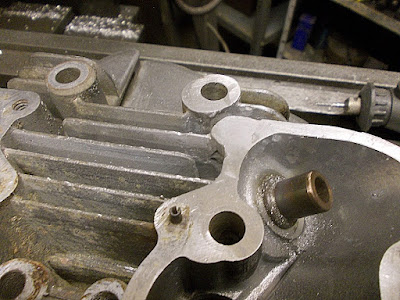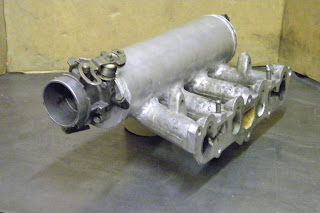
A small gas cup was needed on the TIG torch and quite a bit of stick-out of the Tungsten in order to get into the hole.
Just a bit of filler rod added to start with and then
the torch held at about 150 Amps until the filler flowed into the casting.

Filler rod added bit by bit until the metal had been built up to a level just above the top face of the head.

Followed by some hand work with a "Dremel" type tool to smooth off the excess metal added to
the cooling fin adjacent to the repair.
The finished job, ready for the customer to drill and tap the head for a new stud.












































